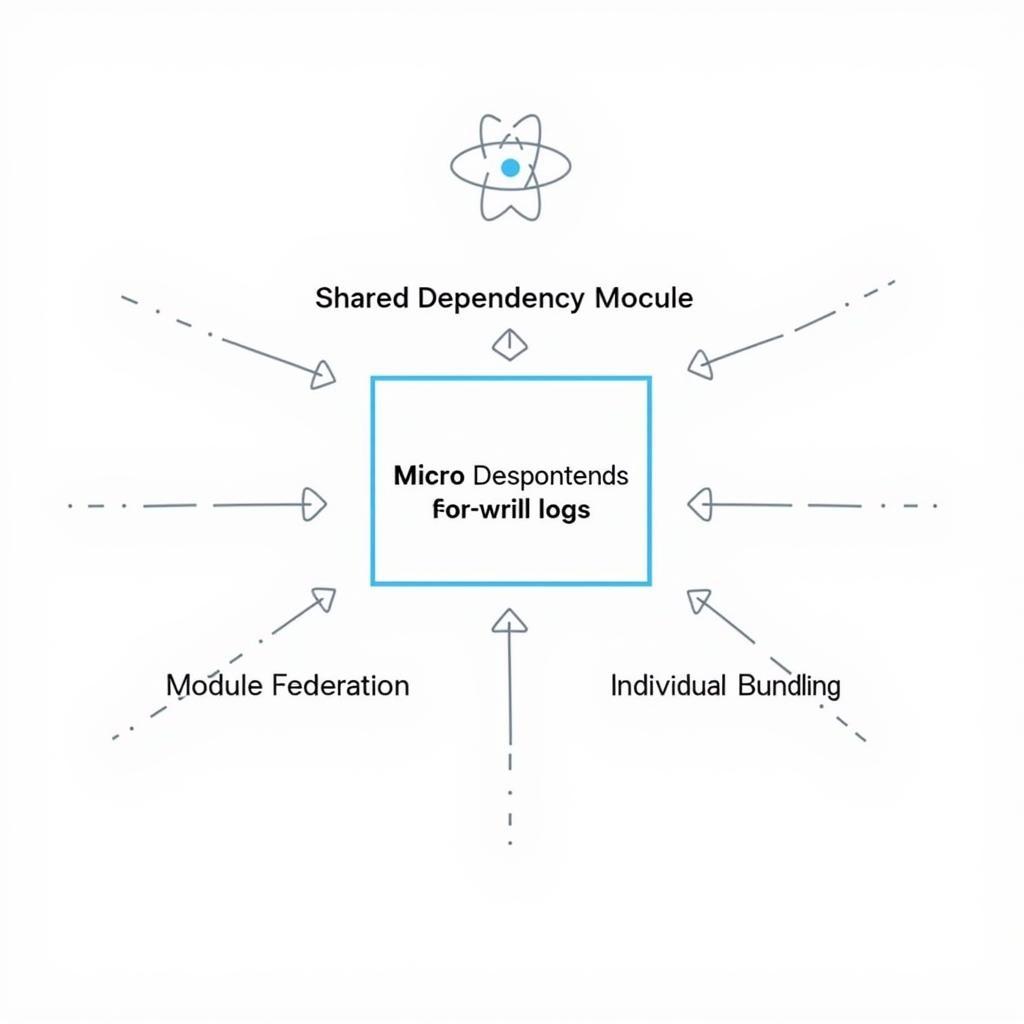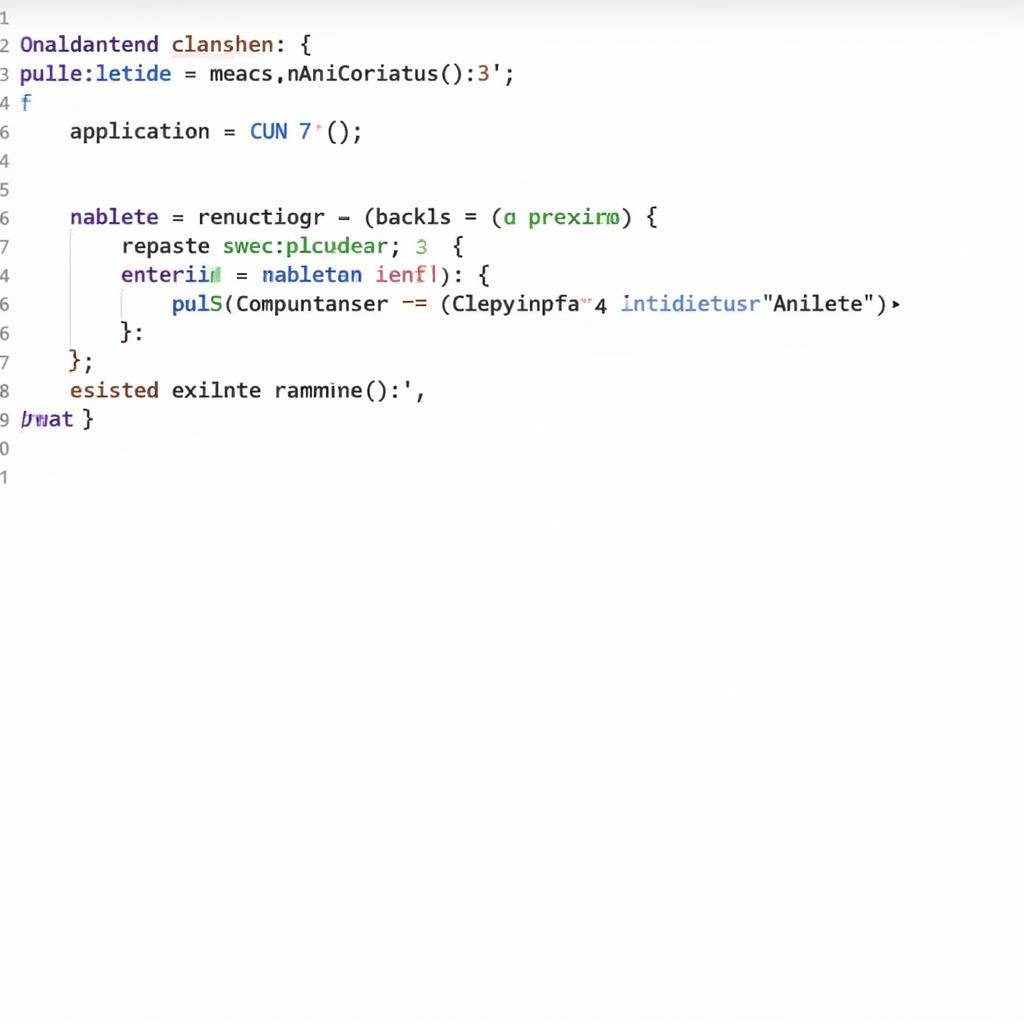Single spa React offers a modern approach to frontend development, allowing you to build micro-frontends that seamlessly integrate within a larger application. This guide will explore the benefits, challenges, and practical applications of using single spa with React, providing you with the knowledge to decide if this architecture is right for your project.
Understanding Single Spa and its Benefits
Single spa is a framework for bringing together multiple JavaScript microfrontends in a single application. It acts as an orchestrator, loading and unloading individual microfrontends based on the URL, allowing for independent development, deployment, and technology stacks. This is particularly beneficial for large projects or teams where maintaining a monolithic frontend becomes cumbersome.
One of the key advantages of using single spa is the ability to incrementally upgrade your application. You can rewrite sections of your existing application as microfrontends, piece by piece, without requiring a complete overhaul. This drastically reduces risk and allows you to adopt newer technologies, like React, within a legacy system.
The benefits also extend to team autonomy. Separate teams can own and manage their respective microfrontends, fostering a more agile and efficient development process.
After introducing this concept, you might want to learn more about improving your hair care routine. Check out the hair spa benefits and risks.
Implementing Single Spa with React
Integrating React with single spa is relatively straightforward thanks to the dedicated single-spa-react library. This library simplifies the process of creating and registering React microfrontends. It provides a helper function that encapsulates the necessary lifecycle methods (bootstrap, mount, unmount) required by single spa.
Here’s a simple example demonstrating how to register a React application as a single spa microfrontend:
import React from 'react';
import ReactDOM from 'react-dom';
import singleSpaReact from 'single-spa-react';
const MyReactApp = () => <h1>Hello from React!</h1>;
const reactLifecycles = singleSpaReact({
React,
ReactDOM,
rootComponent: MyReactApp,
domElementGetter: () => document.getElementById('root'),
});
export const bootstrap = reactLifecycles.bootstrap;
export const mount = reactLifecycles.mount;
export const unmount = reactLifecycles.unmount;This snippet registers MyReactApp as a single spa microfrontend, specifying the root component and the DOM element where it will be mounted. The exported functions (bootstrap, mount, unmount) are the lifecycle hooks that single spa uses to manage the microfrontend.
Addressing Common Challenges
While single spa offers significant advantages, it’s crucial to be aware of potential challenges. One such challenge is managing shared dependencies. Microfrontends might rely on common libraries, which can lead to version conflicts or code duplication. Strategies like using a shared dependency module or employing a module federation approach can help mitigate this issue.
 Managing Dependencies in Single Spa React
Managing Dependencies in Single Spa React
Another consideration is communication between microfrontends. Since they operate independently, establishing communication channels requires careful planning. Event buses or shared state management solutions can facilitate inter-microfrontend communication. However, excessive communication can lead to tight coupling and erode the benefits of microfrontend architecture. Aim for loose coupling and well-defined interfaces between microfrontends.
Advanced Single Spa React Techniques
Beyond the basic setup, single spa offers advanced features for optimizing performance and enhancing the user experience. Lazy loading of microfrontends allows for faster initial load times, as only the necessary microfrontends are loaded initially. Prefetching can further improve performance by loading microfrontends in the background before they are needed.
 Implementing Lazy Loading in Single Spa React
Implementing Lazy Loading in Single Spa React
How to Implement Shared State Management?
Managing shared state across microfrontends can be challenging. One popular approach is to use a centralized state management library like Redux or Zustand. This library acts as a single source of truth for shared data, allowing microfrontends to subscribe to and update the state.
“When working with single spa, it’s crucial to establish clear boundaries between microfrontends and strategically manage shared dependencies,” advises John Smith, Senior Frontend Architect at Web Solutions Inc.
Single Spa React and SEO Optimization
When implementing single spa React, consider SEO implications. Ensure each microfrontend has proper title tags, meta descriptions, and other SEO elements. Server-side rendering (SSR) can also be implemented to improve SEO and initial load times. While more complex to set up with single spa, SSR can greatly benefit your search engine rankings.
Sometimes, hair treatments might not be suitable for everyone. Understand the disadvantages of hair spa before deciding.
Choosing the Right Architecture
Deciding whether single spa React is right for your project depends on several factors. If you have a large, complex application with multiple teams and a need for independent deployments, single spa can be an excellent choice. However, for smaller projects, the added complexity might outweigh the benefits. Consider the long-term maintainability and scalability of your application when making this decision.
Conclusion
Single spa React offers a powerful and flexible approach to building modern web applications. By leveraging the benefits of microfrontends, you can improve development workflows, enhance application scalability, and incrementally modernize your frontend architecture. While there are challenges to consider, the benefits can be substantial for large projects and organizations seeking a more agile and maintainable frontend development process. Remember to thoroughly assess your project’s needs and choose the architecture that best suits your specific requirements. Single spa React provides a valuable tool for navigating the complexities of modern frontend development.
FAQ
- What are the main benefits of using single spa React?
- How do I integrate React with single spa?
- What are the common challenges of using single spa?
- How can I manage shared dependencies between microfrontends?
- How can I implement lazy loading with single spa React?
- What are the SEO implications of using single spa React?
- How do I choose the right architecture for my project?
Do you know that certain spa treatments might be linked to specific medical conditions? Learn about axial spa is a is kind of arthritis.
You might also be interested in exploring other related topics on our website, such as the benefits of different types of massage or the latest skincare trends.
If you need any assistance, feel free to contact us. Call us at 0373298888, email us at [email protected], or visit us at 86 Cau Giay, Hanoi. Our customer service team is available 24/7.